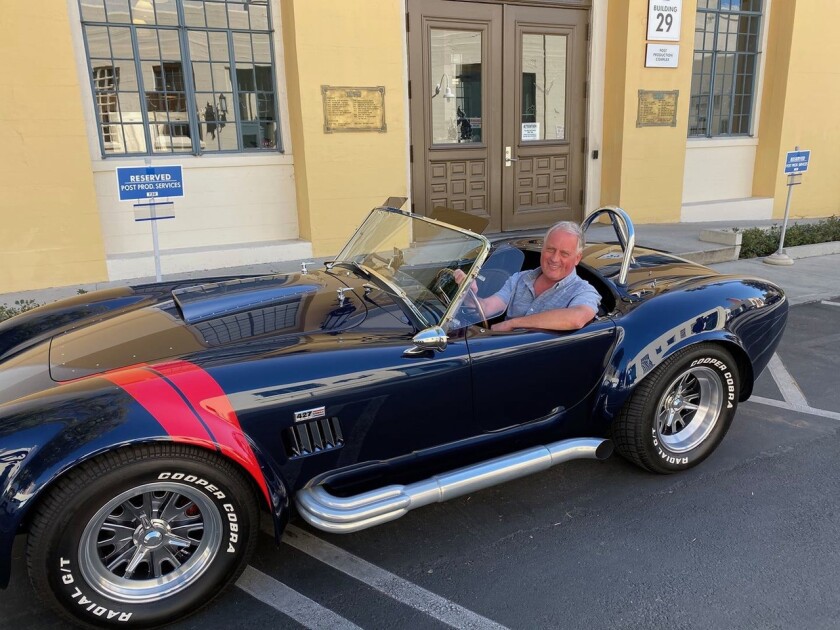“Ford v Ferrari” is many things. It’s a race-car movie, naturally. It’s perhaps surprisingly a character-driven story. But mostly, it’s a sound designer’s challenge.
Only a year after winning his first Oscar for “Bohemian Rhapsody,” sound mixer Paul Massey is nominated again, this time for his work on James Mangold’s best picture nominee. “Ford v Ferrari” is Massey’s fifth collaboration with Mangold and notably his first time working on a car-racing movie.
“I’ve known Jim 21 years now and it’s just wonderful getting back together and collaborating with him,” says Massey, who’s in London where he’s mixing Matthew Vaughn’s “The King’s Man” and the latest James Bond film, “No Time to Die.” “I knew the film was going to be very exciting and challenging, the overall stake of it and how it’s perceived by the audience as not only a car film but it also has this character development and story behind the scenes at its core. All of Jim’s films are like that — it doesn’t matter what genre he picks. The excitement, for me, was to uncover how he was going to do a character-driven story in a race-car overcoat.”
Much of Massey’s job relied on the sounds recorded by another set of nominees, sound editor Donald Sylvester and his team. (The editor collects all the film’s sounds, including dialogue and effects; the mixer then determines how the audience hears those sounds.)
Advertisement
It was up to production recordist Steven A. Morrow, who is nominated alongside Massey and his fellow mixer David Giammarco, to capture the exact noises made by a period-accurate Ferrari and Ford GT40. The team miked specific areas of each car, from the engine to the rear axle to the exhaust, to ensure Massey and Giammarco would have enough variation during the final mix.
“Those really were the key,” Massey notes. “Once we had those two authentic engines from those two authentic cars recorded, we were all set. It would have been the worst thing in the world to try and re-create those specific engines from library recordings. Everyone who is a car freak would be up in arms. Donald and the team went to great lengths to ensure they got the exact replicas of those cars.”
During the mixing process, Massey and Giammarco worked closely with Mangold, who likes to do a lot of experimentation during the mix. Initially, Massey had over 70 tracks of dialogue and 110 tracks of musical score to incorporate, while Giammarco had hundreds of tracks of effects and background, including 28 tracks for each car. Every sequence became a balancing act of finding the right mix of sounds at the exact right levels.
Advertisement
Sometimes, the solution was less is better — taking an effect out or removing a music cue rather than adding more sound in. The film builds to a climactic 25-minute sequence at the Le Mans race, which was re-created in California and proved to be the most difficult aspect of the mix.

“Ford v Ferrari” sound mixer Paul Massey in a 2017 Ford Shelby Cobra.
(Mark Edwards)
“We couldn’t just go full-on, all-out adrenaline and muscle-car sounds for 25 minutes,” Massey says. “You’d completely wear out the audience and there’d be no heart to the story at all. We had to really refine the moments where the cars took the lead or the crowd took the lead or the music took the lead as we went through that. It took a long time to work our way through it. We actually had to break it up into four acts and then we had to balance the music or bring it in later or take cues out or think about whether we needed to be with [driver] Ken Miles [played by Christian Bale] more.”
Instead of simply laying the score over the dialogue and effects, Massey got each individual instrument recording from composers Marco Beltrami and Buck Sanders to play with what to highlight and what to reduce in a particular moment, an unusual amount of leeway for a sound mixer.
The team also had to re-record much of the dialogue done inside the production stunt cars, as the engines in those replica vehicles weren’t accurate. “They were cars made to look like the GT40 and the Ferrari, but actually inside might have a Honda engine or Chevy engine,” Massey explains. “So it was completely the wrong sound and had to be replaced, although we were able to salvage some of it.”
While the racing sequences took a lot of trial and error, especially when bringing depth to the crowd cheers and to the engine revs, the more intimate, character-driven scenes were often just as difficult.
“The scene with Ken Miles in the hangar listening to the [Le Mans] race on the radio was a very difficult sequence to put together in terms of what ambiences should be playing to show his loneliness and his defiance of admitting that he was lonely,” Massey remembers.
“It was a really touching sequence, with a lot of interaction from the radio source and the car effects that were being played on the radio and the airport background noises outside the hangar in real time. It took a lot of weaving to feel the emotion we wanted the audience to feel.”
"sound" - Google News
January 31, 2020 at 09:30PM
https://ift.tt/2S4VWzD
'Ford v Ferrari' sound team makes the engines rev, race and roar - Los Angeles Times
"sound" - Google News
https://ift.tt/2MmdHZm
Shoes Man Tutorial
Pos News Update
Meme Update
Korean Entertainment News
Japan News Update

No comments:
Post a Comment